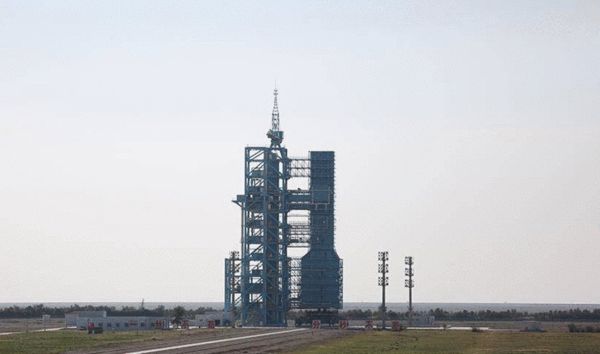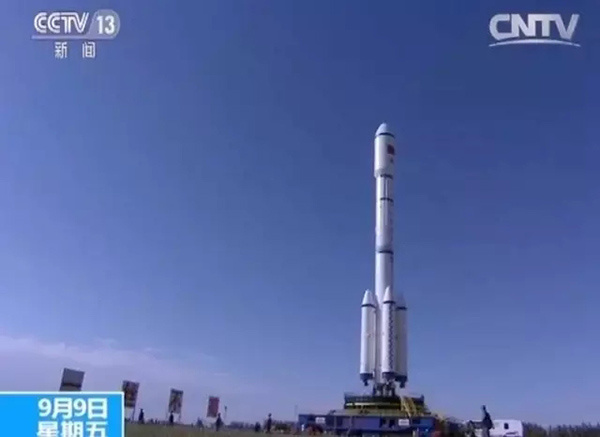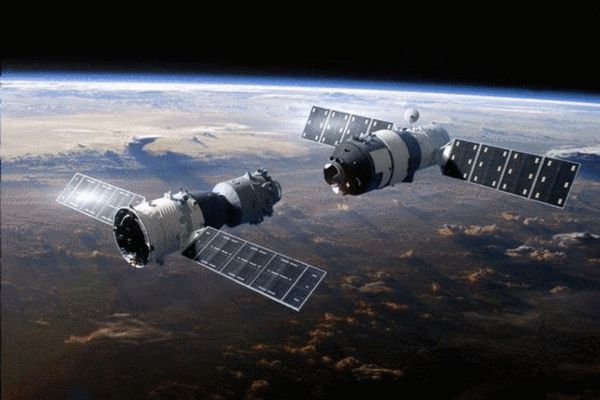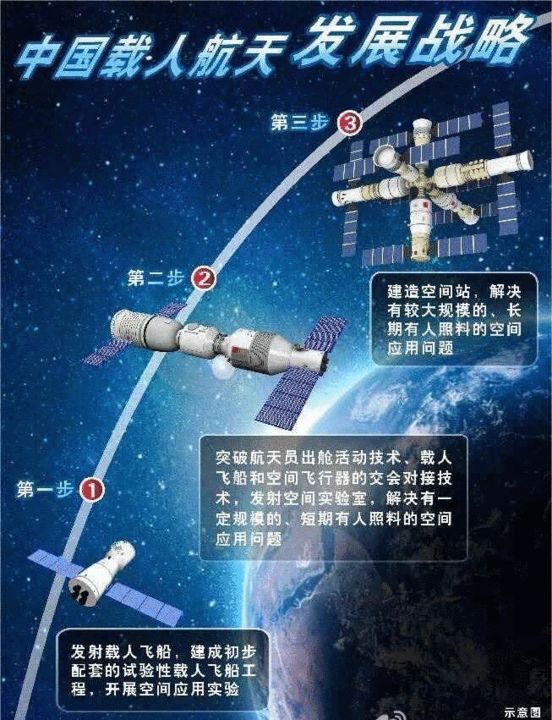Temple on the second to be launched: more than 10 of the world's most cutting-edge experiments

(September 15, Tower of the temple on the second and long second f T2. )
Mid-Autumn Festival night, 22:04 P.M., Chinese temple on the second launch will be in the limelight.
Temple on the second using the multifunctional platform for the first time, the astronauts can write, eat, do science experiments, life work balance; communications for astronauts equipped with a Bluetooth headset and Bluetooth stereo; replaced carpet with floor; the cabin lighting with beige colors, the brightness can be adjusted manually, and bedside lamp for each astronaut installed ... ...
Wu Ping, spokesman of China's manned space engineering, launch second space laboratory is completed in full battle of mission-critical for promoting sustainable development of China's manned space, is of great significance.

(CCTV on September 14, began on September 15, "temple on the second" will launch the window period, satellite launch. )
Temple on the second experimental space cold atomic clock error 3,000 seconds
Temple on the second is China's first real space laboratory aboard the space cold atomic clock 14 applied load and weight loss cardiovascular research aerospace medical laboratory equipment, is equipped with in-orbit repair technology verified devices, robotic arm operator Terminal repair test equipment, space technology among middle school students in Hong Kong is carried out to 3 winning a design contest for an experimental project.
From the appearance point of view, Temple, second temple on the first, or with the laboratory module and resource-two-class configuration, 10.4 m in length, a maximum diameter of 3.35 meters, Sun 18.4 metres wingspan and weighs 8.6 tonnes, designed on-orbit life of 2 years.
Temple on the second was based on the temple on the first backup of the target aircraft, according to temple on the second task needs modification developed by.
As far back as two years ago, in September 2014, "China's first person in space," Yang Liwei, to China as President of the General Assembly of the Association said the space exploration – 2016 China will launch second space laboratory, and to launch manned spacecraft Shenzhou 11th and day boat first cargo spaceship, with the temple on the second rendezvous and docking.
Until June this year, Chinese Academy of Sciences, engineering and technology center of academician Gu Yidong, Senior Adviser on space applications only disclosed Temple on the second part of the space science missions. Earth system Earth observation and space science, space technology, space technology and space medicine in areas such as application and testing.
Worth noting is that in the temple on the second lab to be carried out over more than 10 of the world's most cutting-edge experiment, contains key projects in space science Physics: space cold atomic clock experiments. "The space cold atomic clock" on track to achieve ultra-high precision error of 30 million a second. This satellite positioning and navigation, gravitational wave detection and other space science research to have a significant impact.
Temple on the second medium-term presence will also conduct a 30-day astronaut tests.
This is not only a test of the astronauts themselves, new challenges for China's manned space technology--how to provide a suitable living environment for a long time, how to provide supplies, including water for a long time, will be verified in the temple on the second task.
In this flight, Temple on the second will also release an accompanying satellite, which is a micro satellite, equipped with multiple test load, and have strong ability of orbit, with its space mission flexibility and mobility. Concomitant satellite will be carried out during the mission flying over the observation of the combination of space experiments and spacecraft technology provides support and develops space technology applications.

("
Temple on the second" space laboratory and the Shenzhou spacecraft and docking sketch)
"Space race": completed in 2020 permanent space station
At present, the implementation of temple on the second mission the astronaut system, space application systems, launch vehicles and space systems, launch systems, monitoring and communication systems lab system, has completed a comprehensive walkthrough, all preparations had been completed prior to launch.
Temple on the second launch countdown, but behind every step is crucial.
On September 9, the temple on the second space laboratory with the long second f T2 vertical transshipment from Jiuquan Satellite Launch Center launch Tower.
On September 13, the Jiuquan Satellite Launch Center launch, control and communication systems, together with the Beijing Aerospace command and control center and other departments held region-wide training for all test equipment status inspection.
Yesterday, Chief Designer of the China Aerospace Science and technology group of temple on the second Zhu Congpeng said, before the temple on the second launch preparations are going well: "temple on the second is fairing on the buckle, and launch vehicle on the butt, now on the launch pad, and now, after preliminary tests, all were very good. ”
Yesterday afternoon, the China manned space program announced that Wu Ping, spokesman at the Jiuquan Satellite Launch Centre, Temple on the second night of the harvest moon Festival begins its journey.
The smooth launch of temple on the second, space research, China is about to open another curtain.
According to the plan, in October this year, China will launch Shenzhou 11th manned spacecraft, docking with the temple on the second space laboratory, astronaut medium-term presence test for 30 days.
Next year the long seventh carrier rocket will launch the boat first cargo spacecraft, docking with the temple on the second, adding space station operations, such as the propellants in orbit validation of key technologies.
And all this, before and after 2020, China is to build a permanent space station.

(China's manned space development strategy)
Space program 24: manned "three-step"
Chinese space experts, launch second space laboratory tasks is completed in full the key battle for China's subsequent space station construction and operation of a solid base and accumulated valuable experience for promoting the sustainable development of China's manned space, is of great significance.
In fact, as early as in 1992, was established with the goal of building a space station, China's space program.
This plan is divided into three steps, the first step is a phase of manned spacecraft, the goal is to send astronauts into space, running a few days and back.
The second step is space laboratory. At this stage interact to address the Assembly, dock, recharge and recycling four technologies. These technologies related to space station Assembly, key issues such as the survival of astronauts on the space station.
Temple first interact to address in the next step, China is a target vehicle launched by docking problems. Temple first was shipped to space, by docking can be transformed into a space for short-term care laboratory.
Docking technologies mature, before they can launch real space laboratory – Temple on the second.
Temple on the second will complete the regeneration cycle, payload and applications experiments as well as a number of other research projects. After a space laboratory in China's manned the "three-step" plan, China will end up is a basic type of the construction of the space station.
To this end, in Wenchang, Hainan, China new secondary in Jiuquan, Taiyuan and Xichang fourth after launch, mainly responsible for the satellites in geosynchronous orbit, massive polar-orbiting satellites, large space stations, and deep space probe satellites and other spacecraft mission.
(Partial source: surging in the people's daily, the news, etc)
(Editor: Yang Lei UN873)
2016-09-15 18:45:34
Sohu
天宫二号即将发射:将开展十几项世界最前沿实验

(9月15日,塔架上的天宫二号和长征二号F T2火箭。)
中秋月圆夜,今晚22时04分,中国天宫二号将在万众瞩目之中发射。
天宫二号首次使用可展开的多功能小平台,航天员可以在上面写字、吃饭、做科学实验,生活工作两不误;通信方面为航天员配备了蓝牙耳机和蓝牙音响;用地板取代了地毯;舱内灯光采用米黄色色调,亮度可手动调节,并为每个航天员安装了床前灯......
中国载人航天工程新闻发言人武平表示,发射天宫二号是全面完成空间实验室阶段任务的关键之战,对于推进中国载人航天事业持续发展,具有十分重要的意义。

(央视9月14日消息,从9月15日开始,"天宫二号"将进入发射窗口期,择机发射。)
天宫二号实验:空间冷原子钟误差三千年一秒
天宫二号是中国首个真正意义上的太空实验室,搭载了太空冷原子钟等14项应用载荷,以及失重心血管研究等航天医学实验设备,配备在轨维修技术验证装置、机械臂操作终端在轨维修试验设备,并会进行香港中学生太空科技设计大赛的3个获奖实验项目。
从外观上看,天宫二号与天宫一号差不多,还是采用实验舱和资源舱两舱构型,全长10.4米,最大直径3.35米,太阳翼展宽约18.4米,重8.6吨,设计在轨寿命2年。
天宫二号是在天宫一号目标飞行器备份的基础上,根据天宫二号的任务的需要改装研制而成。
早在两年前,2014年9月,“中国太空第一人”杨利伟,便以太空探索者协会中方大会主席身份透露——2016年中国将发射天宫二号空间实验室,并发射神舟11号载人飞船和天舟一号货运飞船,与天宫二号交会对接 。
直到今年6月,中国科学院空间应用工程与技术中心高级顾问顾逸东院士,才对外披露天宫二号的部分空间科学任务。它将开展地球观测和空间地球系统科学、空间应用新技术、空间技术和航天医学等领域的应用和试验。
值得注意的是,在天宫二号实验室将要开展的10多项世界最前沿实验中,包含有空间科学物理领域的重点项目:空间冷原子钟实验。“空间冷原子钟”有望实现3千万年误差一秒的超高精度。这将对卫星定位导航、引力波探测等空间科学研究产生重大影响。
天宫二号还将进行30天的航天员中期驻留试验。
这不仅是对航天员本身的考验,也是对中国载人航天技术全新的挑战——如何长时间提供适合人生活的环境,如何长时间提供包括水在内的物资供给,都将在天宫二号任务中得到验证。
这次飞行中,天宫二号还将释放一颗伴随卫星,这是一颗微纳卫星,搭载多个试验载荷,并具备较强的变轨能力,具备开展空间任务的灵活性与机动性。伴随卫星将在任务期间开展对空间组合体的飞越观测等试验,为主航天器的技术试验提供支持,并拓展空间技术应用。

("
天宫二号"空间实验室与神舟飞船对接示意图)
“太空争霸赛”:2020年建成永久空间站
目前,执行天宫二号飞行任务的航天员系统、空间应用系统、运载火箭系统、发射场系统、测控通信系统和空间实验室系统,已经完成综合演练,发射前的各项准备工作已基本就绪。
天宫二号发射进入倒计时,但此前幕后的每一步都至关重要。
9月9日,天宫二号空间实验室与长征二号F T2火箭垂直转运至酒泉卫星发射中心发射塔架。
9月13日,酒泉卫星发射中心的发射、测控、通信等多个系统,连同北京航天飞行控制中心等多个部门举行了全区合练,对所有参试设备的状态进行检验。
昨天,中国航天科技集团天宫二号总设计师朱枞鹏称,天宫二号发射前各项准备工作都在顺利进行:“天宫二号已经扣上整流罩,和运载火箭对接上了,现在已经在发射台上,现在状态,经过前期测试,各方面都非常好。”
昨天下午,中国载人航天工程新闻发言人武平才在酒泉卫星发射中心宣布,天宫二号将在中秋之夜开始它的旅程。
天宫二号的顺利发射,即将掀开中国太空研究的另一场大幕。
按照计划,今年10月,中国将发射神舟十一号载人飞船,与天宫二号空间实验室进行对接,进行30天的航天员中期驻留试验。
明年,长征七号火箭将发射天舟一号货运飞船,与天宫二号进行对接,进行推进剂在轨补加等空间站建造运营关键技术的验证。
而这一切,是为了中国2020年前后建成永久性空间站。

(中国载人航天发展战略)
航天计划24年:载人航天“三步走”
在中国航天专家看来,发射天宫二号是全面完成空间实验室阶段任务的关键之战,将为中国后续空间站建造和运营奠定坚实基础、积累宝贵经验,对于推进中国载人航天事业持续发展,具有十分重要的意义。
其实早在1992年,中国就确立了以建立空间站为目标的航天计划。
这一计划分三步,第一步是载人飞船阶段,目标是能够把宇航员送到太空,正常运行若干天,并成功返回。
第二步是空间实验室阶段。在这个阶段要解决组装、交互对接、补给以及循环利用等四大技术。这些技术关系到空间站的组装、宇航员在空间站的生存等关键问题。
天宫一号就是中国在第二步计划中为了解决交互对接问题而发射的一个目标飞行器。天宫一号被运往太空之后,通过对接可以被改造成一个短期有人照料的空间实验室。
对接技术成熟之后,才可以发射真正的空间实验室——天宫二号。
天宫二号将完成再生式循环系统、有效载荷和应用系统的实验以及其他一些科研项目。经过空间实验室阶段,在中国的载人航天“三步走”计划中,中国最终要建设的是一个基本型空间站。
为此,中国会在海南文昌新建继酒泉、太原、西昌之后的第四个航天发射场,主要承担地球同步轨道卫星、大质量极轨卫星、大吨位空间站和深空探测卫星等航天器的发射任务。
(部分资料来源:人民日报、中新闻、澎湃等)
(责任编辑:杨磊 UN873)
2016-09-15 18:45:34
搜狐网